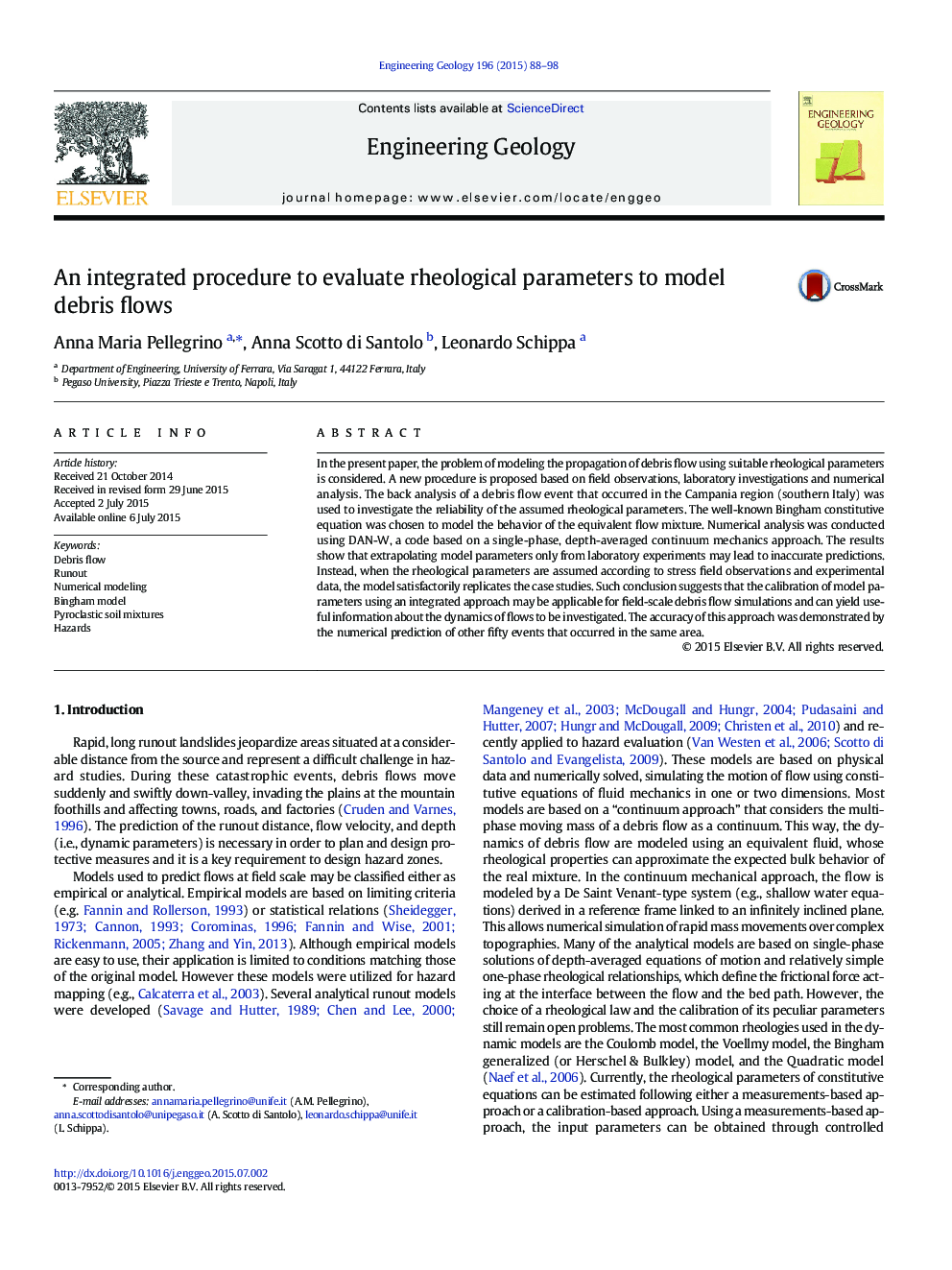| Article ID | Journal | Published Year | Pages | File Type |
|---|---|---|---|---|
| 4743350 | Engineering Geology | 2015 | 11 Pages |
•Back analysis of real debris flow events occurred in Campania region (Italy).•Model parameters derived integrating field investigation and laboratory experience.•Parameters from laboratory experiments alone may lead to inaccurate predictions.•Hybrid model (stress field observations and experimental data) leads to good results.•A combined approach may be applicable for field-scale debris flow simulations.
In the present paper, the problem of modeling the propagation of debris flow using suitable rheological parameters is considered. A new procedure is proposed based on field observations, laboratory investigations and numerical analysis. The back analysis of a debris flow event that occurred in the Campania region (southern Italy) was used to investigate the reliability of the assumed rheological parameters. The well-known Bingham constitutive equation was chosen to model the behavior of the equivalent flow mixture. Numerical analysis was conducted using DAN-W, a code based on a single-phase, depth-averaged continuum mechanics approach. The results show that extrapolating model parameters only from laboratory experiments may lead to inaccurate predictions. Instead, when the rheological parameters are assumed according to stress field observations and experimental data, the model satisfactorily replicates the case studies. Such conclusion suggests that the calibration of model parameters using an integrated approach may be applicable for field-scale debris flow simulations and can yield useful information about the dynamics of flows to be investigated. The accuracy of this approach was demonstrated by the numerical prediction of other fifty events that occurred in the same area.
